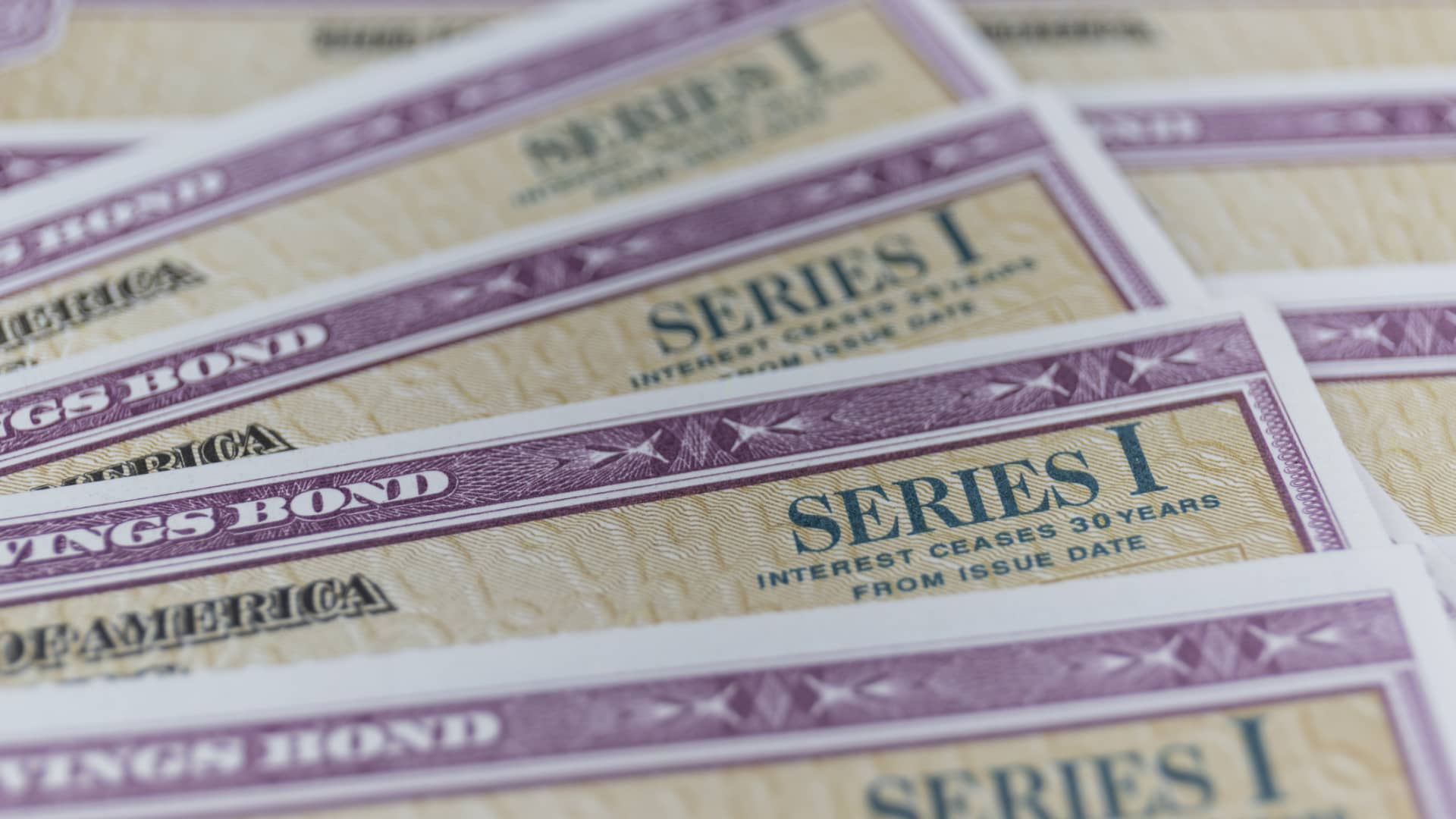Products You May Like
There’s been record-breaking demand over the past year for Series I bonds, an inflation-protected and nearly risk-free asset. But rates have been falling and the yield will decline again in May, experts say.
Newly purchased I bonds currently offer 6.89% annual returns through April, and the yearly rate may drop below 4% in May based on the latest consumer price index data. Annual inflation rose by 5% in March, down from 6% in February, according to the U.S. Department of Labor.
An I bond rate below 4% would represent “a pretty big fall from the previous rates,” said Ken Tumin, founder and editor of DepositAccounts.com, a website that tracks these assets. But it’s still “above average” compared to historic returns, he said.
Backed by the U.S. government, I bonds earn monthly interest with two parts: a fixed rate, which may adjust every six months for new purchases but stays the same after buying, and a variable rate, which changes every six months based on inflation. The U.S. Department of the Treasury announces new rates every May and November.
The annual rate may drop below 4%
Based on inflation data from the past six months, Tumin says the variable portion of the I bond rate could drop to 3.38% in May. While the fixed portion of the rate, currently at 0.4%, may increase a little in May, he doesn’t expect much movement.
If the fixed rate remains at 0.4%, the new annual rate may drop to 3.79%, Tumin said. Of course, the combined annual yield is only an estimate until TreasuryDirect announces new rates in May.
In November 2021, the annual I bond yield jumped to 7.12%, and hit a record high of 9.62% in May 2022 before falling to 6.89% in November 2022.
Less attractive for short-term savings
David Enna, founder of Tipswatch.com, a website that tracks I bonds and other assets, said the new rate may no longer be as attractive for investors “seeking yield just for a year or two.”
While it’s difficult to predict when the Federal Reserve may pivot on interest rate hikes, options like Treasury bills or certificates of deposit have emerged as relatively safe alternatives for shorter-term savings.
As of April 12, the top 1% average of one-year certificates of deposit were paying 5.19%, according to DepositAccounts. Three-month and four-month Treasury bill yields were also above 5% as of April 12.
However, the new I bond yields may still appeal to longer-term savers looking to preserve purchasing power, Enna said.
“The huge amount of interest came from those people seeking yield, not inflation protection,” he said. “Now we’ll be back to people just seeking inflation protection.”
You can still lock in 6.89% annual returns for six months by purchasing I bonds before May, said Enna. For those eager to capture the 6.89% yield, he suggests buying I bonds before April 27, a few days ahead of the rate announcement.
